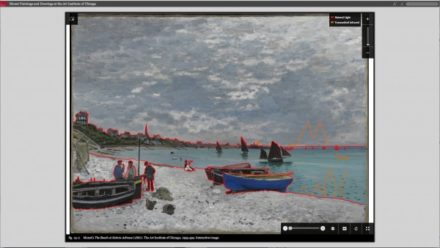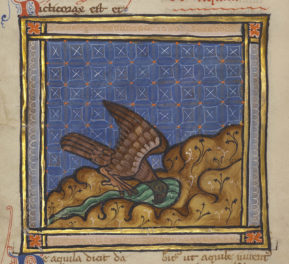
Greg Albers works on an entity relationship diagram (ERD), which visually represents the information being captured and used for the publications database project.
Greg Albers, digital publications manager at Getty Publications, is leading a project to collect and provide access to information on every Getty book published since Publications’ origins in 1954.
Greg’s role as project manager includes mapping 60 years of publishing activity in order to establish a data model for the database. Here, he’s working with an entity relationship diagram (ERD), which provides a visual representation of the information captured in the database—like title, contributors’ names and roles, page count, and image quantities—and how all those various parts relate to one another. “Having a visualization of everything on a single sheet of paper can be extremely useful,” Greg says. “It’s a quick way to insure you’re not missing anything, and to insure what you are capturing is well-modeled and ultimately useful, both to staff here in Getty Publications, and to future users of the Virtual Library and other resources.”
Publications staff is actively adding to the database now, and the public-facing component will go live within an expanded version of the Virtual Library, which currently features just over 300 downloadable backlist books. The expanded version will launch later in 2017, and will include a record for every book published by the Getty. Many of these books will be available for free download; others will have preview versions and point readers to libraries and the Getty Store. The expanded revamped Virtual Library will also feature a special book viewer that includes a visual index of artworks published in the books, and links those works to museum collection sites where readers can learn more, and often view and download high-resolution images.
For more information on the Virtual Library visit the website here, and if you’re interested in Getty Publications, learn more here. Follow @GettyHub on Twitter for more updates and announcements about when this database is available to the public.
See all posts in this series »





Comments on this post are now closed.